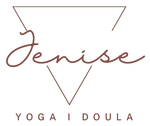Your placenta is one of the most incredible organs, made up of part you, part your baby. Grown just for that baby to give them all of the nutrients and oxygen they need while helping eliminate any waste not needed to help your baby grow. Once pregnancy is over your body will no longer need the placenta, making everyone unique. Your body will grow a new placenta for every new pregnancy or baby unless in some circumstances such as identical twins.
The placenta is grown inside of a mothers uterus and is connected to the baby through placenta arteries and veins, known as the umbilical cord. There are 2 arteries. Arteries take away waste from the baby to be disposed of via mum. The veins bring blood, oxygen and nutrients to the baby from the mum, via the placenta.
The arteries and vein are encased in the umbilical cord in a jelly-like substance called Wharton's Jelly. Mothers blood vessels come through her uterus to reach the placenta through what are called uterine arteries.
The placenta itself is made up of 2 plates. One from the mother’s side, the basel plate, and one from the baby’s, the chorionic plate. Between the two plates is a “pool” where blood is picked up from babies veins and returned to the baby via the umbilical cord, but waste is also disposed of, for the mother to excrete through her urine. Once a baby has been birthed the placenta is no longer needed and is birthed anywhere between 15 minutes to an hour after. This can be done naturally, with assistance from your birthing team, or via injection of synthetic oxytocin.
The nutrient-dense placenta can then be used in many different ways. Some women simply choose to dispose of it, but others like to honour this magical organ, grown specifically for their child. This can be done through a lotus birth where the umbilical cord stays attached to the baby until it naturally falls away.
Some women choose to plant their placenta, eat it raw or in smoothies. Placenta prints can be made and framed or umbilical art can range from resin pieces to jewellery. I chose to encapsulate my first baby's placenta for it to be taken as a pill. Benefits of this include reduced risk of postpartum depression or baby blues, increased milk supply, iron level restoration, decrease in stress hormones and reduce postpartum bleeding.
Jenise Russell, yoga instructor, specialising in prenatal yoga and mums and bubs classes, birth and postpartum doula, mother blessing facilitator. @jenise.yoga.doula www.jenise-yogadoula.com

